Affiliate disclosure: This post may contain affiliate links. Please see our Privacy Policy.
It all started when we began looking for a more sustainable way to raise rabbits. Rabbits are an amazing source of lean meat, but it seems a shame to keep them in tiny cages eating pellets.
I personally hate cleaning cages, and all that infrastructure can be expensive. Why not give them access to fresh grass, and let them raise their young as they will? If they can feed themselves, the meat is almost free.
Honestly, there are plenty of reasons not to raise rabbits on pasture including predators, unchecked breeding, tunneling and escapees. Nonetheless, we gave it a try. For science…
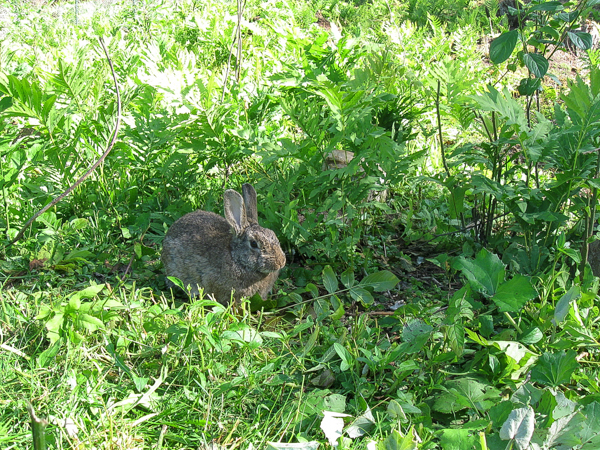
Fencing for Pastured Rabbits
We wanted our rabbits to be truly pastured, not just in a dog run. Their total enclosure was a 50 x 50 ft square area that we’d fenced off for a small orchard.
The land had just been cleared of trees, but not stumped, and soil was in rough shape. It needed a few years before it was ready for orchard trees, so it seemed like a good test plot for pastured rabbits.
We ran 2 ft tall chicken wire all along the inside bottom. One foot of chicken wire was buried on the inside and the other foot of it ran up the side of the orchard fence. Not a particularly strong fence to keep them in, but it did the trick for 6 full months.
Believe it or not, we didn’t have any trouble with rabbits tunneling out. They’d dig at the edge, but hit the wire and then start digging more towards the middle.
They made a pretty elaborate warren, with entrances all over the place, but never outside the fence. Maybe we just got lucky.
Very occasionally one rabbit would get out, but it was always by actually climbing up the chicken wire and slipping through the fence above. One particularly curious female was the main culprit, but she always wanted to be with her kind, and we’d find her standing at the edge of the fence waiting to be let back in.
Feeding Pastured Rabbits
Part of the appeal of raising rabbits on pasture is lowered feed costs. They definitely appreciated supplemental pellets, but for the most part, they were self-sufficient.
The pasture had plenty of ferns and clover growing at the beginning of the summer, and they lasted until the population reached a peak of 80 rabbits. That was just more than the land could bear.
We brought them a bowl of food daily to socialize them and to count them, but once they’d outstripped the land we began seriously feeding them so we didn’t see losses. At the same time, we began harvesting much more aggressively.
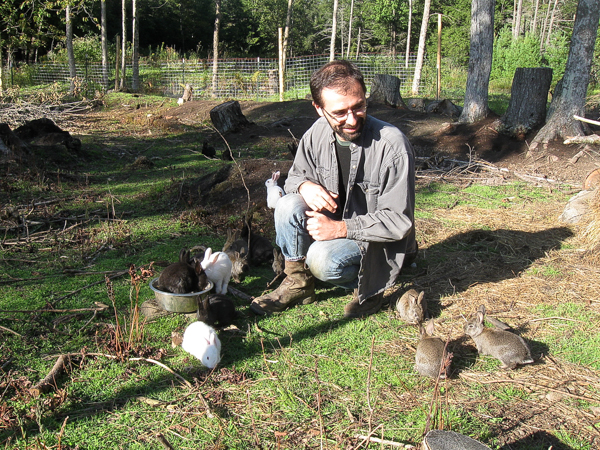
Raising Rabbits in a Colony
Two male rabbits in a cage together will fight, and keep fighting until one of them is dead or castrated. Yes, they’ll actually castrate each other with their teeth. Pretty rough way to go.
Given enough space, rabbits develop a dominance hierarchy and females actually choose who to associate with.
We kept two males in our starter herd, and one of them established dominance and they never quarreled again. Strangely, the dominant one had more territory, but the other seemed to have more luck with the ladies.
Initially, we were worried that the females wouldn’t be good mothers in a “wild” setting, but we watched and waited for the first babies. About 10 weeks after putting them out on pasture we saw our first baby, popping out of a tunnel and then darting back in again. The next day we saw dozens.
The population had exploded seemingly overnight, but really the little ones were underground and they’d finally grown enough to surface.
It was a challenge to harvest rabbits fast enough to keep up with production. Starting with 6 females and 2 males, the population reached a height of 80 rabbits. I didn’t even count how many we harvested for the freezer, but one day I did stop to count all the adults and babies. My best guess is about 80 in sight at once.
At that rate, harvesting them becomes a serious endeavor, and it was all we could do to keep up. By the end of the summer, we decided that our experiment was a success and we didn’t want to continue. We harvested them all in stages, and when there were about 20 rabbits left, that’s when the fox struck…
Managing Predators
Predators are a bigger problem. The rabbits were allowed to dig as much as they liked, which meant we didn’t have trouble with hawks or owls. If we lost one to a flying predator, it was never one of the adults which I kept close track of.
For a while, we had trouble with a raccoon, but a bit of electric wire at the top of the fence kept him out, and then a .22 and a stew pot solved that problem neatly.
By the end of the summer, we’d decided that the experiment was a success, but that we’d have to eat a lot more rabbit meat to keep up with their rate of reproduction. We decided not to overwinter the colony and planned on harvesting all the rabbits except a small breeding population that we’d keep indoors in cages over the winter. Harvesting them in stages, we dropped the population down to 20 and planned the final harvest the next day.
That night, a fox struck. While there was an electric fence at the top for raccoons, there was nothing to keep out diggers. We’d buried chicken wire facing inward to keep them from digging out, but we’d done nothing to keep something from digging in.
Big mistake. Though we’d dealt with predators before, this was our first fox incident.
How do you know it’s a fox? Well, a fox will kill every last one, plain and simple. They kill them all and then bury their harvest for later.
We came out in the morning to hastily buried piles of dead rabbits, and evidence that someone had dug under the fence.
Oddly, there was a single rabbit remaining alive. I wonder what it must have been like to survive the night of the fox. She hopped right up to me and I picked her up.
That little lady was given to a family member, who raised her as a pet and still has her even now years later. I guess she won the rabbit lottery.
Conclusions
All in all, raising rabbits on pasture was a success. The population was a huge issue, and we just can’t eat that much rabbit meat. If you’re going to have unchecked rabbit breeding, make sure you have an army to feed.
Predators are also obviously a concern, and that fox could have ended things a lot sooner. It was lucky that the fox didn’t strike until near the end, but it could have gone very differently.
While a raccoon will take one or two, which would hardly be noticed, a fox is another matter. If you give it a try, make sure you protect them from digging predators like foxes.
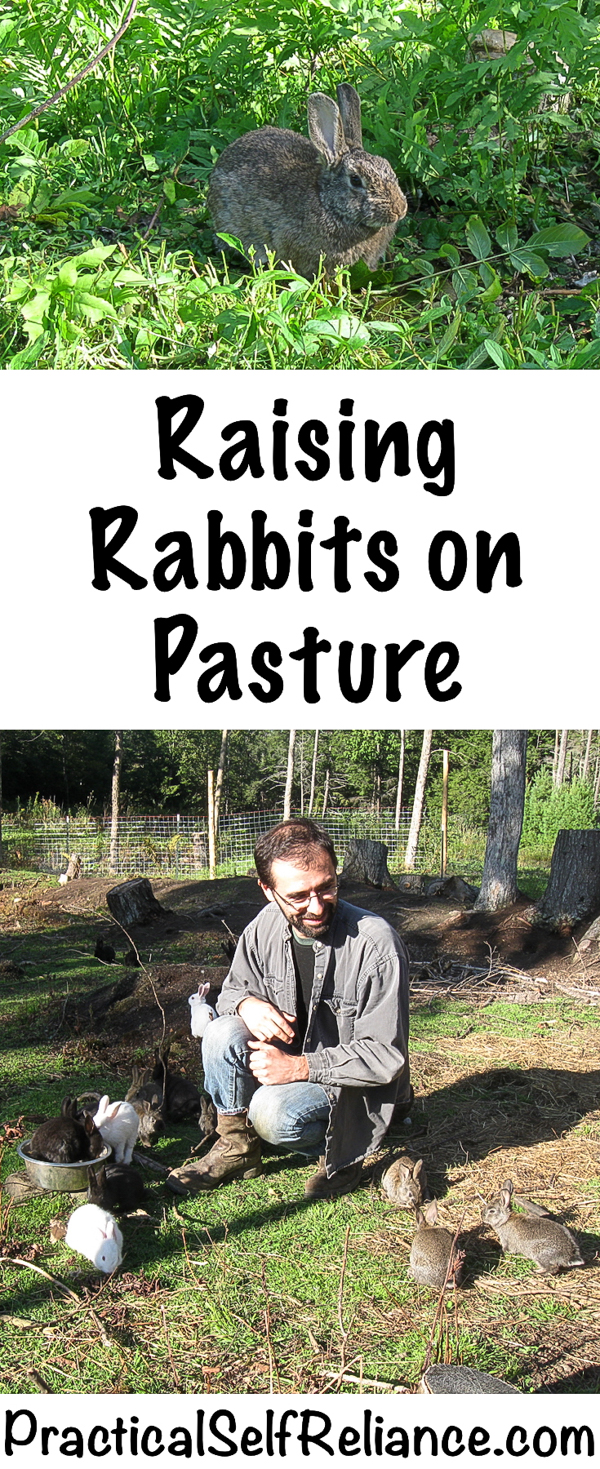
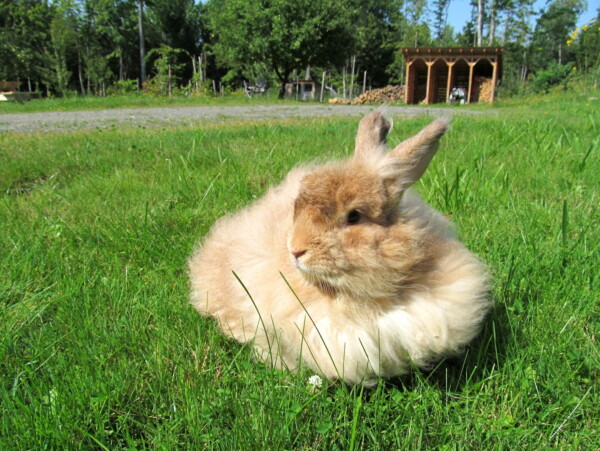
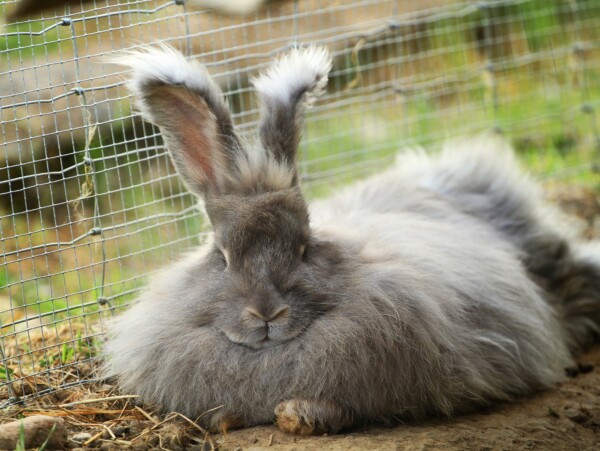
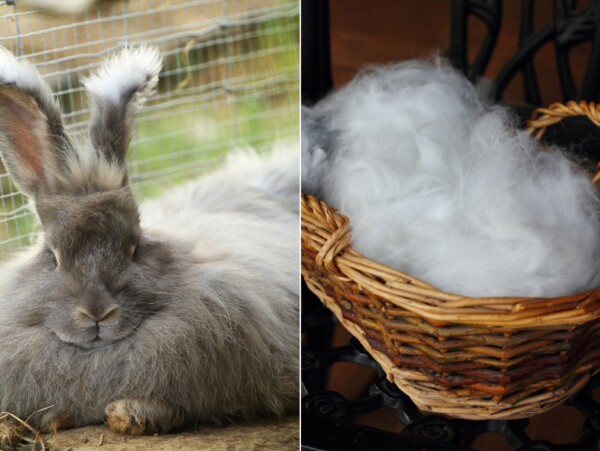
I have tried a couple of times to pasture rabbits of different breeds.
Predators were not the problem, but illness was a big one as well as bot fly larvae . All died within a few weeks and there are no vets where I live that treat rabbits. New laws have taken away our rights to buy OTC antibiotics for farm animals from farm stores so I stopped even trying.
I am successful raising guinea pigs though and they are not suffering like the rabbits.
My theory is that domestic rabbits have no resistance to outdoor pathogens. They are too fragile to deal with the elements and the parasitic insects. maybe there are heartier breeds that can handle being outdoors and not living their lives in those horrible cages!
Hi! I’m thinking of experimenting with something like this in the future. What breed of rabbits were these? Mixes? Thanks for sharing your experience! =)
They were mixed mostly, but we did have one New Zealand white buck that I know for sure. The rest are all random breeds. Chelsea Green Publishing has a new-ish book out on raising rabbits on pasture, you might try reading that too for ideas.
Couldn’t you put chicken wire on the bottom, they wouldn’t be able to dig & if it’s a tractor you could move it whereever, just put in nesting boxes.?
I live in an area with fire ants and am afraid they would be an issue. Any insights on how you or others may deal with them? Thank you!!!
Good question, and fire ants is not something I’ve ever had to deal with. No good advice for you there unfortunately…
Hi! I am planning a potential rabbit colony at some point, and I have a couple questions:
Were they socialized enough to be easily picked up for harvest, or did you have to chase/trap them when you needed to grab one? Would this work at all with more population control, ie, keeping the buck in a separate enclosure and/or separating out babies when they reach a certain age? Or with a half in, half out enclosure set up where they can spend part of their time in a barn (especially for winter) and part of their time in an outdoor enclosure? And how would you keep foxes out– a deeper fence?
Thanks in advance for your help!
Most were socialized to us, and came when we entered because we brought a bowl of food with us as a “treat” each time. The ones born in the pasture were friendly, the but we did have trouble with some that were adults when they came and had not been handled. Those never really got socialized, and they were impossible to catch without multiple people and a net. Good luck separating out the males, I hear they’re mating age as early as 8 weeks, and at that point, which isn’t too long after they come out of underground dens. I’m not sure population control in that way is practical at the enclosure size we had, but it could work with a much smaller run as you described with the half in half out setup.
We originally got the idea from someone who raised meat rabbits commercially in colonies within stalls in an old horse barn. She had 5 females in each stall, and one male. Her system worked pretty well, and if at any time you needed population control you can remove the male. Much smaller setup, and it’d work with a half in and half out setup.
Good luck!
Hi,
How did you deal with the tunnels when it came time to use the land for something else? We put rabbits on pasture this summer and moved their enclosure around every other day, but even still they would tunnel. It makes the pasture difficult to walk around and kind makes me nervous that something is going to break a leg out there, falling into a rabbit hole. We’d really like to do more pastured rabbits, for all of the reasons you give above, but the digging might be a deal breaker.
The pasture they were on became our orchard, and we went through in the early spring when the grass was all dead and brown and buried them in. There were maybe a dozen entrances total? So not really that many to deal with for us. In our case, it wasn’t “pasture” but an area that we’d recently cleared, and there were a lot of tree stumps. For the most part, they chose to locate their tunnels right at the base of stumps, so that means most of the holes were in places we weren’t stepping anyway. It’s been a few years since they were out there, and you really can’t tell other than areas where the grass is particularly green are the places they tended to use as a latrine.
If you’re using real pasture, I would worry if you wanted to run any other animals out there afterward. Maybe the best solution is to till the pasture and replant in that case? It’d be a real hazard for a horse or anything similar.
Great case study.
Can you give a rough percentage of what their food was over their lifespan? What percentage was fern, clover, pellets, etc? Also, if you can, what species of clover and fern (white clover, red clover..)?
I’m not sure the species of fern, but most of the clover was red clover seed that we threw down in the pasture the previous year. We put down both red and white clover seed, but generally, red clover does better on our land. They ate a lot of bark, mostly from ash trees. They really seemed to love it, so we’d throw treetops in when we cut firewood and they’d strip the bark and drag the sticks around (for fun?). We only bought one 50 pound sack of freed that summer, and they didn’t finish it if I remember correctly, but it’s been a few years and I may not be remembering correctly.
It’s hard to guess what their food worked out to percentage-wise, but even when there were dozens of them out there we only brought a token amount of food out just to keep them friendly. If at any point they showed signs of poor condition we would have brought them more, but they were growing well and I’d even describe our big buck as a bit overweight.
Hi! Thanks for all of this! Very interesting and informative!
I have a lot of questions, I hope you don’t mind
1. How do you water them?
2. Do you have bear problem in your area? We do, and wasn’t sure if this will invite bear.
3. What about winter, was wondering if you were thinking about winter set up, even though it seems your research ended before then. We got 60 in. of snow and there will be days closer to 0 F, although about 15-20 F lows is the more common temperature.
4. Dressing them.
I don’t see any local butcher house in my area offer rabbit service. In my opinion, chickens and and quails are quite simple, and hogs are complicated (but more rewae meat).
However, several YouTube videos I see makes me feel it’s not that easy. What’s your opinion and method?
5. Also, I am curious would you keep your set up, if population control isn’t a problem? Otherwise, since you shut it down, what’s your current favorite meat animal you farm?
Thank you so much!
I found your website today, oh boy what a treasure trove!
I like to expand my homesteading knowledge the partical and natural way, just like this rabbits farming here! You warranted hours of fun reading here!
I wonder why didn’t the rabbits hide in the burrows when the fox came in ?
Were they just to tame ?
Surely they must have sensed the danger of the carnage around them ?.
That’s what I would have thought too, but other than raising kits, they didn’t spend much time in their tunnel system. When we’d go outside at night though, most of the rabbits would be out an about. We could walk right through the pasture in the dark checking on them occasionally when we heard noises and the rabbits wouldn’t move, so perhaps they were just too tame for their own good.
The fox could have gotten them in the burrows by digging
So, in all, how large was your total pastured area?
Thanks very much!
Their space was roughly 50ft by 50ft, or about 2500 square feet.
Excellent post on raising rabbits on pasture. Enjoyed reading it.